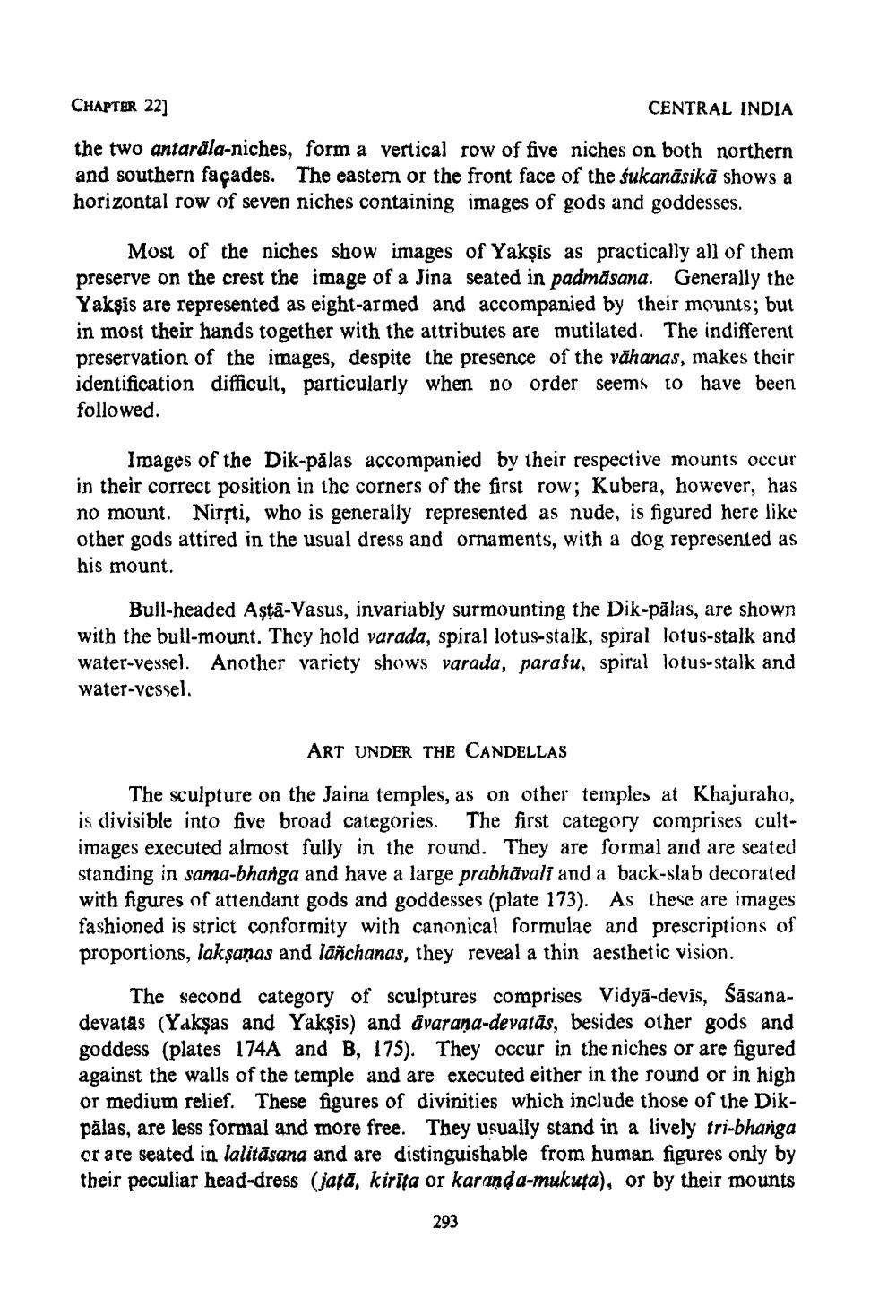________________
CHAPTER 22]
CENTRAL INDIA
the two antarala-niches, form a vertical row of five niches on both northern and southern facades. The eastern or the front face of the sukanāsikā shows a horizontal row of seven niches containing images of gods and goddesses.
Most of the niches show images of Yakṣis as practically all of them preserve on the crest the image of a Jina seated in padmāsana. Generally the Yaksis are represented as eight-armed and accompanied by their mounts; but in most their hands together with the attributes are mutilated. The indifferent preservation of the images, despite the presence of the vāhanas, makes their identification difficult, particularly when no order seems to have been followed
Images of the Dik-pålas accompanied by their respective mounts occur in their correct position in the corners of the first row; Kubera, however, has no mount. Nirsti, who is generally represented as nude, is figured here like other gods attired in the usual dress and omaments, with a dog represented as his mount.
Bull-headed Asta-Vasus, invariably surmounting the Dik-pālas, are shown with the bull-mount. They hold varada, spiral lotus-stalk, spiral lotus-stalk and water-vessel. Another variety shows varada, parašu, spiral lotus-stalk and water-vessel
ART UNDER THE CANDELLAS
The sculpture on the Jaina temples, as on other temples at Khajuraho, is divisible into five broad categories. The first category comprises cultimages executed almost fully in the round. They are formal and are seated standing in sama-bhanga and have a large prabhāvali and a back-slab decorated with figures of attendant gods and goddesses (plate 173). As these are images fashioned is strict conformity with canonical formulae and prescriptions of proportions, lakşanas and lañchanas, they reveal a thin aesthetic vision.
The second category of sculptures comprises Vidyā-devis, Sāsanadevatas (Yakşas and Yakşis) and avarana-devatās, besides other gods and goddess (plates 174A and B, 175). They occur in the niches or are figured against the walls of the temple and are executed either in the round or in high or medium relief. These figures of divinities which include those of the Dikpālas, are less formal and more free. They usually stand in a lively tri-bhanga crare seated in lalitásana and are distinguishable from human figures only by their peculiar head-dress (jatā, kirita or karanda-mukuta), or by their mounts
293




